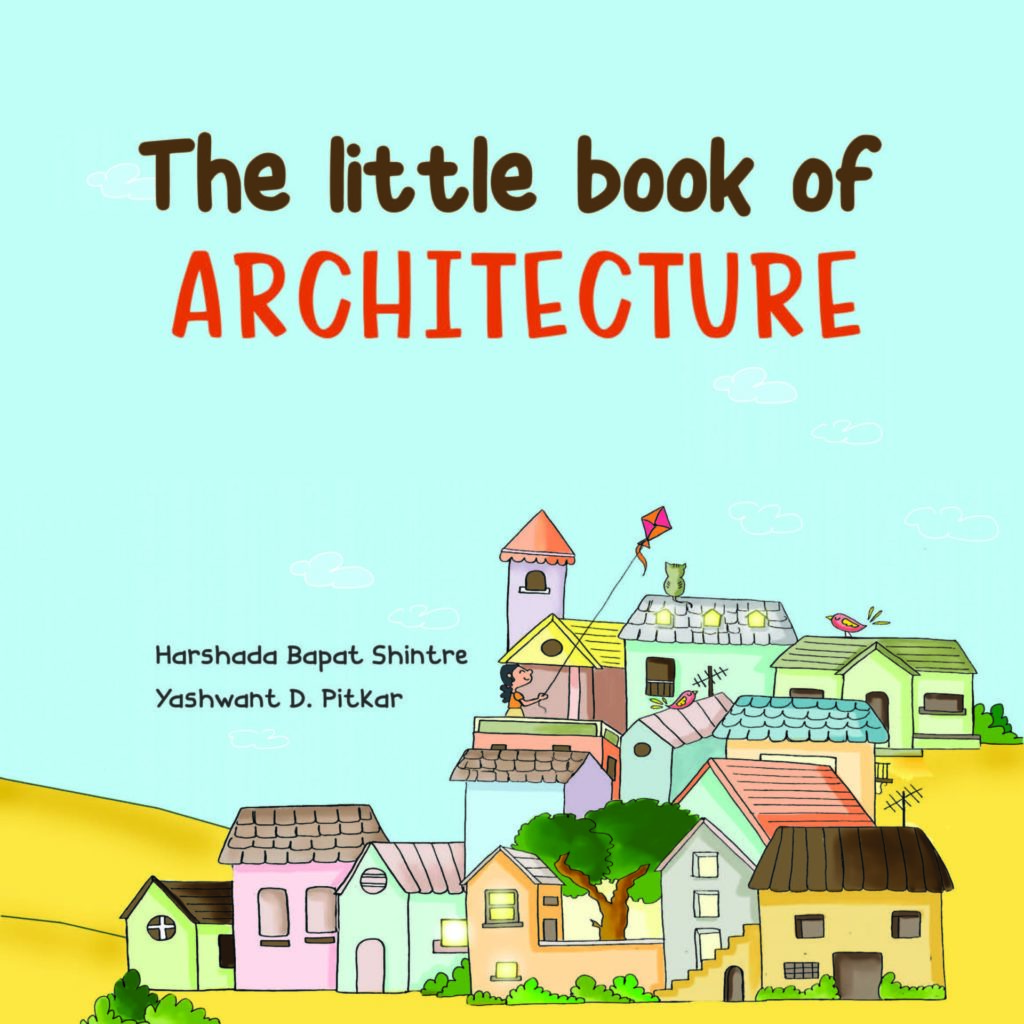Era and her little friends are out playing. As they play the games that we have all played in our childhood, Prof Harshada Bapat Shintre and Prof Yashwant Pitkar take them, and us readers, on a journey of enlightenment, gently introducing architectural terms that are so ubiquitous that their meanings are often unfamiliar, even to us adults. That, in the process, the seeds of inquisitiveness are gently planted in the impressionable minds, quietly teaching without being didactic, being an additional, perhaps the most priceless outcome of the exercise, is an added extra – an organic ornamentation, if I may.
The Little Book of Architecture scores precisely here, and scores big. In its stark simplicity and childish innocence is writ large its charm, illustrated with equal élan by Swarnima Telang and Harshada Bapat Shintre. The back cover of the book makes the lofty claim that “(the) book introduces children to the A to Z elements of architecture, in a playful and engaging way. The aim is to make them more observant and perceptive of the built environment that surrounds them.” It is a matter of great happiness that the authors are able to achieve it: the success of the stated claim being nothing short of stellar.
And why not? The book is the fruit of, and forgive me for using an oft abused cliché, “labour of love” of two senior teachers, both practicing architects.
Prof Harshada Bapat Shintre is an architect, post graduate from CEPT, Ahmedabad. She is a co-author of a book, titled ‘Architecture: Space, Issue and Material’ published by CEPT University press 2013.Currently she is Assistant Professor at Rachana Sansad’s Academy of Architecture, Mumbai.
Prof Yashwant Pitkar is an architect, photography enthusiast and an avid collector of inks and ink pens. He has held 13 one-man exhibitions of his architectural photographs at various centres across the country. He is also the author of ‘The romance of red stone’ published by Super book house 2011. Currently he is a professor at Rachana Sansad’s Academy of Architecture, Mumbai. It will not be out of place to mention here that the Academy of Architecture is a 65-year-old college of architecture with which Prof Yashwant Pitkar is associated for the last six years, before which he was associated as a teacher with the over a hundred years old Sir JJ College of Architecture, which needs no further introduction.
The first thing that comes to mind after going through the book is the obviously laudable thought that had prompted the undertaking of the exercise. But if the concept was a noble one, it is the content that has surely elevated it to the level of a winner – tempting one to call it a tome to Bauhaus simplicity, no less.
The soft-spoken Prof Yashwant Pitkar is reticent to a fault and it is only after thorough prodding that one gets to understand how deeply he is concerned (or is it hurt?) by the way we are forcing our children into the closed confines of walled spaces, and often into a digitally overwhelmed life. The book is not only a cathartic scream against pedagogy by rote, but also a manifesto of sorts to let the children play-learn – relate to and discover in a fun, outdoorsy way. Not content to brood and sulk, Prof Yashwant Pitkar has taken the plunge with the book, which he hopes, will be the first of a series. May his tribe increase.
But why am I reviewing a book on architecture, however noble the cause may be, in a blog dedicated to fountain pens, inks and writing accessories? The answer is simple – Prof Yashwant Pitkar is one of us, albeit of the celebrated kind. Known as the “travelling inkpot” he is not only one of the most celebrated members of the fraternity of collectors but has also been tirelessly working to popularise the use of fountain pens and inks among the young, spending valuable personal resources to spread awareness about the sustainability of the pen and ink, their positive benefits as a tool against depression, their ability to assist in greater knowledge retention, their obvious advantages in equipping one with greater mind-body coordination.
Prof Yashwant Pitkar’s latest initiative is a series of competitions for budding architects where they are being given the task of designing a fountain pen from scratch. The first such event has already been conducted and it is now in the process of being scaled up so as to take the movement national and also to involve fountain pen, ink and accessory manufacturers so that the winning designs created by the students may see the light of the day commercially.

